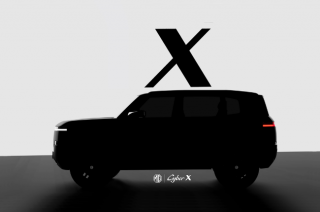
The Toyota Prius was built to be a car for the 21st century, a car that would be the first hybrid production car for the masses and a car that would lessen the impact of vehicles on the earth. When it came out in 1997, the world was abuzz with this new revelation from Toyota: combining internal combustion and electric propulsion would lead to great fuel economy and less emissions. It even earned the 1997-1998 Japan Car of the Year Award, a title it would hold a few more times later in its life.
However, despite the good intentions of its creators, the Prius did not lead a life without criticism. The main complaints it received in its earlier generations were its bland looks, less-than-average performance, and the fact that it became a fashion accessory for celebrities.

Now in its fifth generation, the Prius has shed its dull image and comes with more power than ever before. Prius Chief Engineer Satoki Oya described the car's transformation as an extreme endeavor prompted by former Toyota President and CEO Akio Toyoda's suggestion that the Prius had reached its peak and should be retired for taxi use. However, product planners and engineers, optimistic about reshaping the Prius's destiny, went on a comprehensive redesign of both its exterior and powertrain.
This overhaul not only resulted in a more stylish appearance but also delivered significantly improved performance and enhanced fuel economy, bringing back the hybrid pioneer's relevance and appeal. An overhaul that gave it the edge on this year’s Japan Car of the Year award.

The Japan Car of the Year (JCOTY) award is orchestrated by representatives from 39 of Japan's most influential automotive and lifestyle publications, who annually appoint a panel of 60 jurors. In the initial round of voting conducted in early November, jurors curated the "10 Best" cars for 2023, a list that included vehicles such as the Toyota Prius, Toyota Alphard, Nissan Serena, Honda ZR-V, Subaru Crosstrek, Mitsubishi Delica Mini, Abarth 500e, BMW X1, Maserati Grecale, and Volkswagen ID.4. The final round of voting took place at the Sodegaura Forest Raceway near Tokyo, where jurors convened to test drive the selected vehicles before casting their votes to determine the ultimate winners.

At the end of it all, the fifth-generation Toyota Prius, with its refreshed look and vigor, secured the coveted title. The JCOTY committee bestowed 360 votes upon the Prius, surpassing the first runner-up, BMW X1, which garnered 150 points. The Honda ZR-V claimed the third spot with a total of 100 votes.
Latest News
-
Hyundai brings back free roadside help this holy week / News
Hyundai Motor Philippines will once again offer roadside help to travelers during Holy Week. This year marks the third time the program is being done, with select dealers ready to assist on...
-
Ford Philippines is offering a three-year free scheduled service package on their best-selling vehicles this month. / News
Thinking of owning a Ford? Ford Philippines now offers a free three-year Scheduled Service Plan (SSP) on select models.
-
MG teases the Cyber X—Could it be headed for PH next? / News
MG will soon launch the all-new Cyber X at the upcoming Shanghai Auto Show. The new model brings a fresh, boxy design and might be MG’s next electric or hybrid vehicle. More details will be...
Popular Articles
-
Cheapest cars under P700,000 in the Philippines
Jerome Tresvalles · Sep 02, 2024
-
First car or next car, the Ford EcoSport is a tough package to beat
Jun 18, 2021
-
Car Maintenance checklist and guide – here’s everything you need to know
Earl Lee · Jan 12, 2021
-
Most fuel efficient family cars in the Philippines
Bryan Aaron Rivera · Nov 27, 2020
-
2021 Geely Okavango — Everything you need to know
Joey Deriquito · Nov 19, 2020
-
Family cars in the Philippines with the biggest trunks
Sep 20, 2023
-
Head to head: Toyota Rush vs. Suzuki XL7
Joey Deriquito · Oct 28, 2020
-
Why oil changes are important for your car
Earl Lee · Nov 10, 2020
-
2021 Kia Stonic — What you need to know about it
Joey Deriquito · Oct 16, 2020
-
Top 7 tips for buying a used car in the Philippines
Joey Deriquito · Nov 26, 2020







